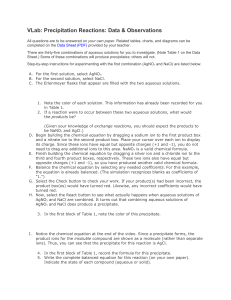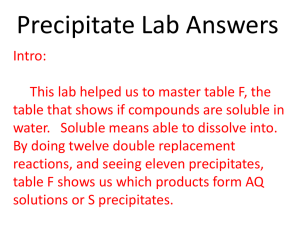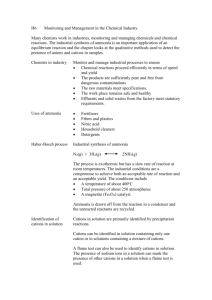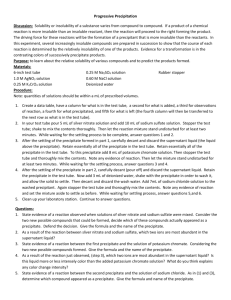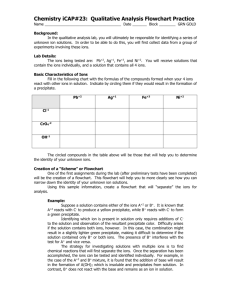Chapter 2: Analysis by Mass
advertisement
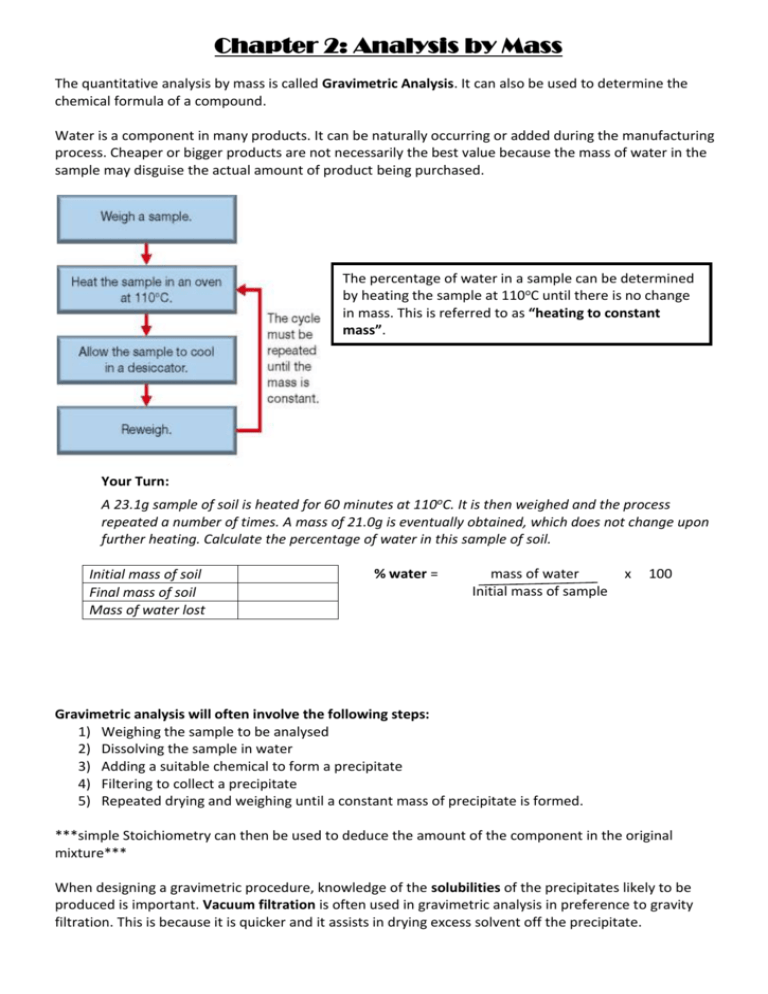
Chapter 2: Analysis by Mass The quantitative analysis by mass is called Gravimetric Analysis. It can also be used to determine the chemical formula of a compound. Water is a component in many products. It can be naturally occurring or added during the manufacturing process. Cheaper or bigger products are not necessarily the best value because the mass of water in the sample may disguise the actual amount of product being purchased. The percentage of water in a sample can be determined by heating the sample at 110oC until there is no change in mass. This is referred to as “heating to constant mass”. Your Turn: A 23.1g sample of soil is heated for 60 minutes at 110oC. It is then weighed and the process repeated a number of times. A mass of 21.0g is eventually obtained, which does not change upon further heating. Calculate the percentage of water in this sample of soil. Initial mass of soil Final mass of soil Mass of water lost % water = mass of water Initial mass of sample x 100 Gravimetric analysis will often involve the following steps: 1) Weighing the sample to be analysed 2) Dissolving the sample in water 3) Adding a suitable chemical to form a precipitate 4) Filtering to collect a precipitate 5) Repeated drying and weighing until a constant mass of precipitate is formed. ***simple Stoichiometry can then be used to deduce the amount of the component in the original mixture*** When designing a gravimetric procedure, knowledge of the solubilities of the precipitates likely to be produced is important. Vacuum filtration is often used in gravimetric analysis in preference to gravity filtration. This is because it is quicker and it assists in drying excess solvent off the precipitate. Your Turn: A technician takes a 5.0g sample of vegemite and dissolves it into water. Enough silver nitrate solution is then added to precipitate all the chloride ions present. After filtering and drying to constant mass, 1.05g silver chloride is obtained. Calculate the percentage sodium chloride in the sample: Sources of Error: If certain things happen during the analysis it is important to be able to predict the effect this will have on the final result. Action Insoluble materials not filtered out before forming precipitate Not enough of the precipitate forming chemical added Effect on result Overestimated Underestimated Forming a precipitate that is too soluble Forming extra precipitate due to presence of competing ions Weighing precipitate before it is dry Not rinsing precipitate before drying out Underestimated Adding too much of the precipitate causing chemical No effect Using too much water for the initial dissolving No effect Overestimation Overestimated Overestimated Reason Apparent mass of the precipitate will increase Not enough of the precipitate will form as some of the ions being analysed for will remain in solution Not all the ions being analysed will be in the precipitate Too much precipitate will form The water present will increase the apparent mass of precipitate As the precipitate dries, other soluble chemicals will begin to crystallise out of the small amount of solution still trapped in the precipitate. These will add to the mass. This is a necessary part of the method to make sure all required ions are in the precipitate. Chemical must be in excess. This is a practical consideration – the more water you have, the longer the filtering step. Empirical and Molecular Formula: The empirical formula of a compound is determined by calculating the number of moles of each element that is present. These figures are converted into the simplest whole number ratio. The molecular formula is the actual number of atoms present in a molecule of a substance. If the molar mass is known, it is possible to calculate the empirical formula. Your Turn: A compound contains 64.9g Carbon, 13.5g Hydrogen and 21.6g of Oxygen. If the molar mass of the compound is found to be 148, find the empirical and molecular formula.


